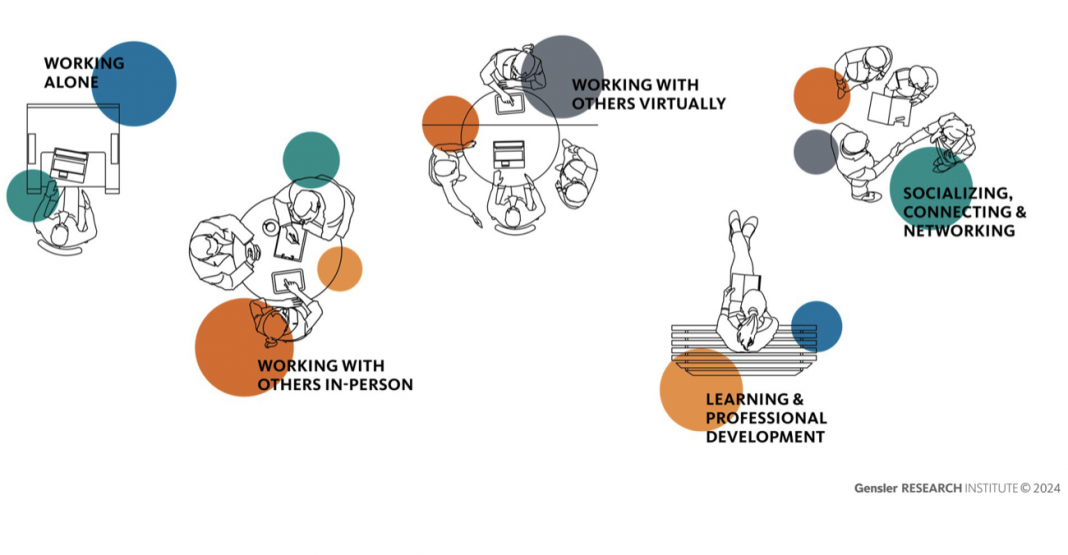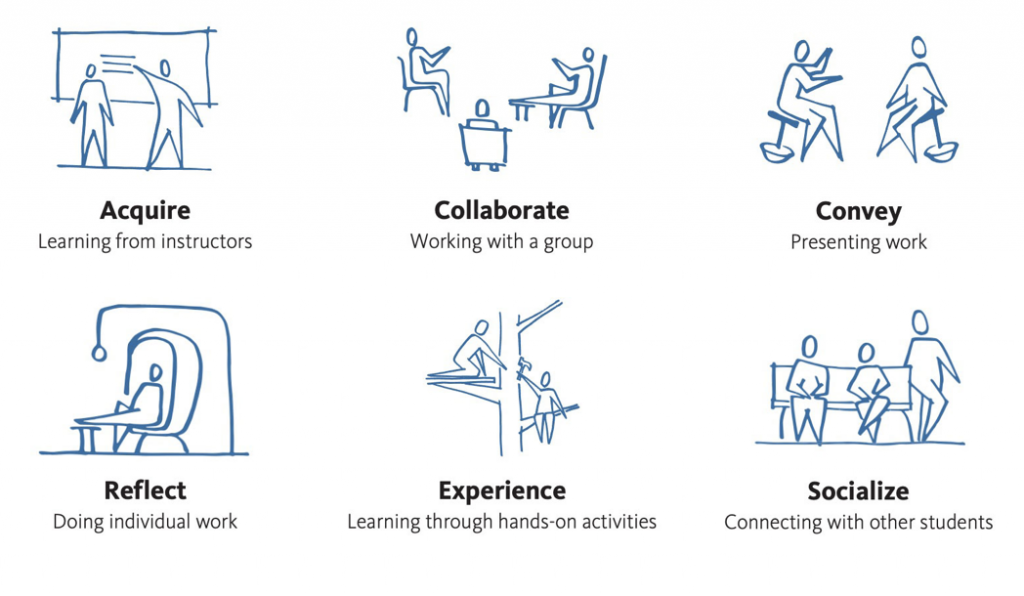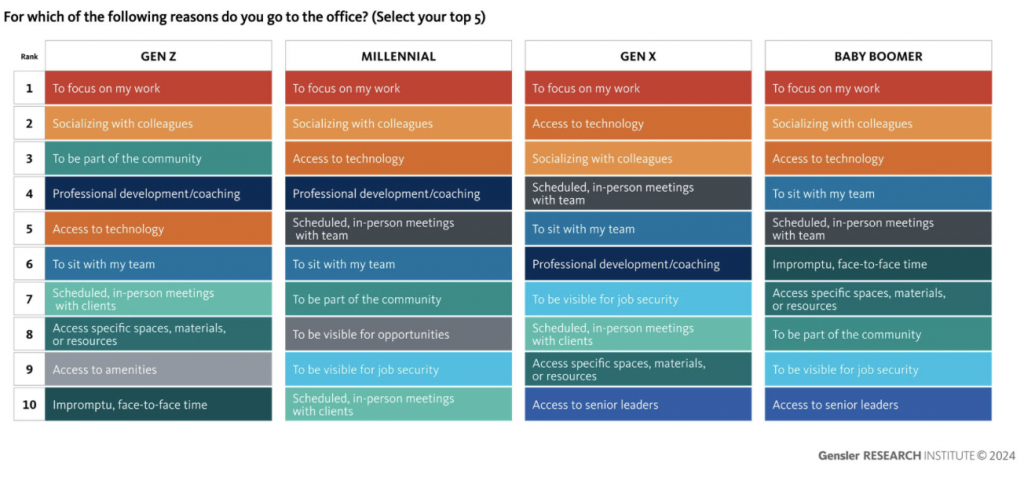WDM Assistant Editor, Emily Ambery, discusses how she sees her recent undergrad experience blending with workplace initiatives and the latest research from Gensler.
As a recent graduate, I find some comfort in the workplace beginning to take some design inspiration from college campuses. Maybe the real world isn’t so different from my last four years in school. From a multimodal start to college in 2020 and community spaces like coffee shops and gardens, workplace design has picked up a few things from higher education.
Janet Pogue McLaurin and her colleges, Erin Cubbison and Meghan Webster at Gensler recently explored how the future of the workforce is designing the workplace and here are some key takeaways we found enlightening.
In their research, Gensler studied 4,000 U.S. remote and office-based workers and 2,500 U.S.-based higher education students, educators, and staff. They found the way people learn and work are intertwined and shaping the way we think about the workplace.
Below are the four key takeaways with the full report available here.
Multimodality
After an overhaul of how students learn in 2020, emphasis has been taken away from lecture-based learning and shifted to experiential learning. In 2021, my university changed its curriculum requirements to embrace more interactivity with its students. Roundtable discussions, internship requirements, study abroad incentives and multimedia final project options became standard practice.
Gensler’s research identified six learning modes: acquire, collaborate, convey, reflect, experience and socialize. College campuses are at the intersection of all of these and the workplace is starting to follow suit.
Much like learning, work also has different modes. Gensler’s been measuring work in five similar ways: working alone, working with others in-person, working with others virtually, learning and professional development and social connecting/networking.
Many organizations and workers embrace lifelong learning for innovation as well as individual career autonomy and competitiveness.
College campuses offer a variety of spaces that embrace the modes of learning, from talking and quiet floors in the library and cafes almost within eyesight anywhere on campus to community gardens and field trips.
The workplace, too, is embracing this variety.
Hybridity
With Covid, our college experience had to look like something it never had before. From virtual instruction, synchronous and asynchronous engagement, and online courses, we got used to being behind a screen for hours at a time.
As we returned to normal instruction, I and other students preferred the on-site experiences, but appreciate the flexibility hybrid learning now gave us. Gensler found that students have the strongest preference for a fully on-campus learning experience with Gen Z students being two times more likely to prefer on-campus instruction than other generations.
Both hybrid school and work are now integrated seamlessly into everyday life, but in person experiences are still preferred.
Gensler found “that employees were coming into the office half their time, but say they ideally needed the office two-thirds of a typical workweek for their individual productivity and for their team’s productivity.”
Community
The crux of the college experience on campus is to learn the balance between community engagements, socializing and focusing on studies. The campus environment is built for students to best figure out how to find their balance.
Gensler found that the values of the college experience were particularly present in Gen Z employees; “To focus on my work” is cited as the most important reason to come to the office, followed by socializing with colleagues, being part of a community, and professional development.
As more of Gen Z enters the workforce, design that embraces variety and flexibility should be at the forefront.
Campus life
One of the most important aspects of a college students life is a source of caffeine, and a place that offers that as well as an area to get work done and/or socialize is imperative. The flexibility of a café, library or outdoor seating supports the many ways students learn. Sometimes, even a trip off campus to a different café or workspace offers much needed variety and change to the regular routine.
Since 2016, Gensler has found a similar trend in work.
Offices are becoming “campuses,” with multiple buildings or diverse workspaces that feel like a travel between buildings. The sense of community and more-than-work support offered can enhance the way people feel about coming into the office or the organization in general.
Feeling supported by amenities such as wellness rooms, learning centers, and innovation hubs, as well as outdoor spaces that promote creativity and relaxation, can create a better employee experience.
Want to learn more about education’s influence on design? Check out:
The Office Gets “Schooled”





